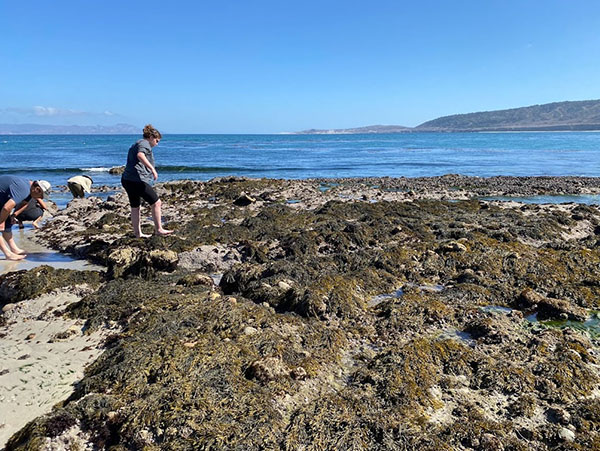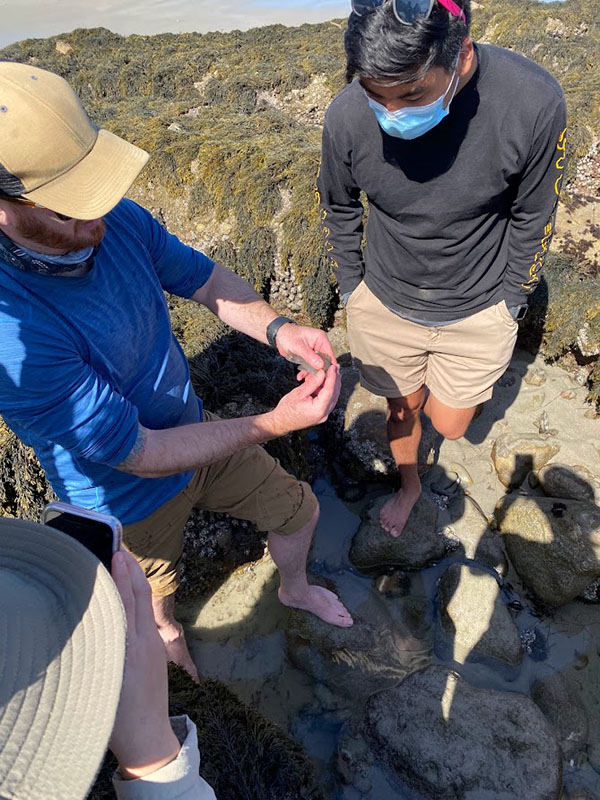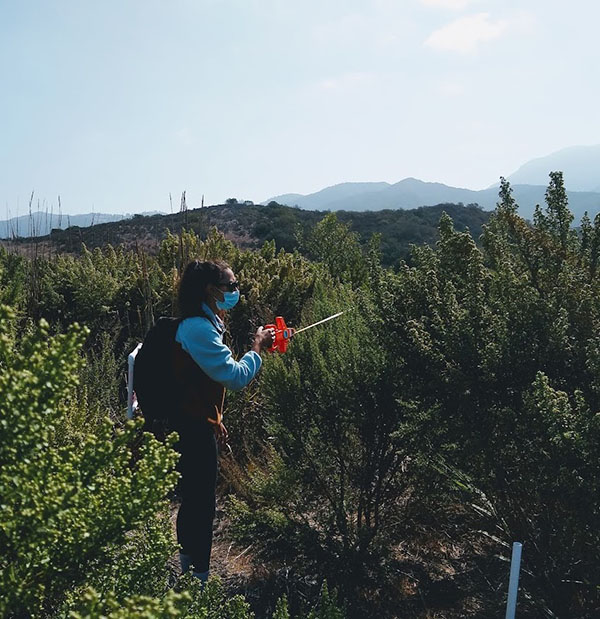
Nov. 24, 2021 — Oxnard area elementary, middle, and high school teachers and CSU Channel Islands (CSUCI) faculty, staff, and students will sail to Santa Cruz Island, part of the Channel Islands National Park, Dec. 4 and 11 for day-long trips in which CSUCI researchers will share science research techniques that the teachers can take back to their students.
“Obviously we’d love to bring all the students to the islands,” said Assistant Professor of Environmental Science & Resource Management (ESRM) Dan Reineman, Ph.D., “But this way it’s a multiplier:, we can bring the teachers to the islands and then the teachers can bring the islands to the students.”
The “Islands Around Us” project is being funded by a $72,450 grant from the National Oceanic and Atmospheric Administration (NOAA)’s Bay Watershed Education and Training (B-WET) program. Oxnard School District Science Instructional Specialist Sarah Raskin is the principal investigator on the grant with Reineman as science advisor.

The project is designed to align with the Next Generation Science Standards (NGSS), the recently-adopted science education standards, Raskin explained. The NGSS includes emphasis on more hands-on experience and experimentation, and teaching students science topics through the lens of their local environment, which tends to better engage students — and Raskin believes the islands are the ideal classroom.
“Everything is magnified on islands,” Raskin explained. “The new science standards emphasize human impacts on our environment, and because impacts on the islands are so stark, they are unique natural laboratories.”
Between 25 and 28 Oxnard School District 2nd through 8th grade teachers from 20 schools will be on board for each trip, plus a handful of teachers from the Oxnard Union High School District. All have some form of science integrated into their classes.
The goal is to show teachers tools and techniques for measuring the health and biodiversity of the islands — techniques that the teachers can take back to their classrooms and teach students how to measure the health and biodiversity of their school campus or their own backyards.
“Measuring the health of an ecosystem does not necessarily require any special tools. While an environmental scientist might use a quadrat to count native plant species in an area, a student could use a hula hoop to do the same thing,” Raskin said. “By putting the hula hoop in different places, students — or scientists — can learn something about the environment around them and human impacts on it.”

After the roughly hour-long sail to the islands with stops for whale and dolphin sightings, the teachers will take guided hikes through Santa Cruz Island with presentations from Reineman and ESRM students; Santa Barbara Botanic Gardens Director of Education and Engagement Scot Pipkin; and Chumash elder Julie Tumamait, who will discuss the first human occupants of the islands, the Chumash.
Also, familiarizing area teachers with what CSUCI has to offer in its ESRM program has the added advantage of letting them know what’s available to science-oriented students who might want to eventually attend CSUCI.
“CSUCI is our students’ local university, so when we work with students we can tell them ‘If you’re interested in these topics, you can study them if you go to CSU Channel Islands,’” Raskin said. “Also, having students participate in science outdoors in a meaningful way changes students’ perceptions of what it means to be a scientist. It lets the students know that a scientist is not always a person in a white lab coat working indoors — it’s somebody outside doing cool things like monitoring biodiversity in the Channel Islands.”
